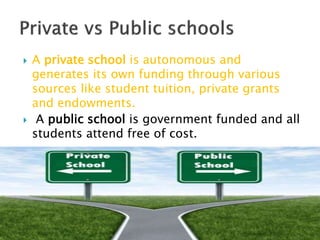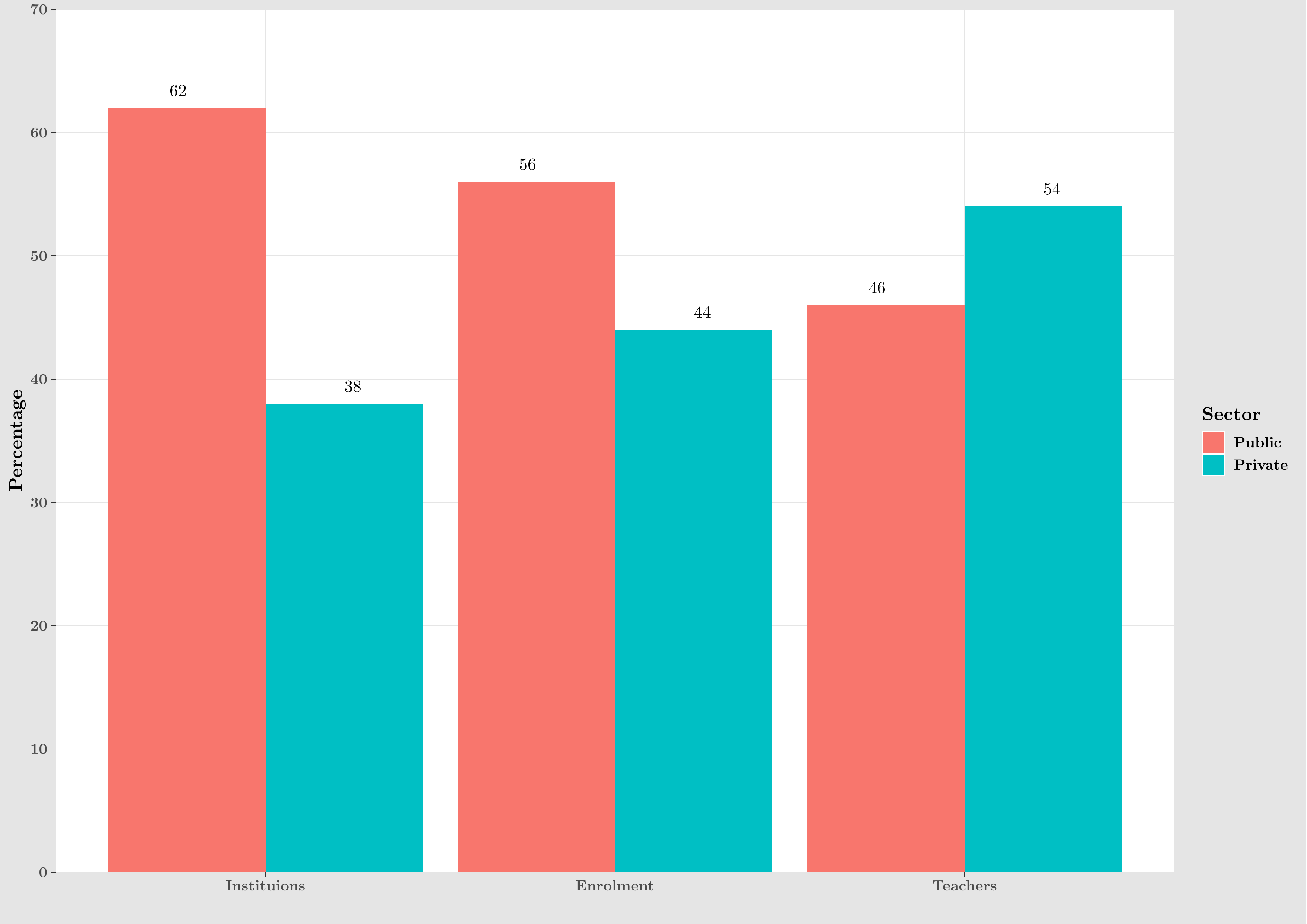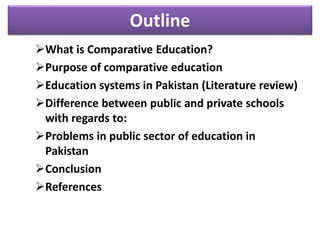Choosing the right elementary school for your child is a crucial decision that can impact their educational journey and future success. Public and private elementary schools offer distinct advantages and disadvantages, making it essential to carefully consider each option before making a decision. This comprehensive comparison will explore the key differences between public and private elementary education, including curriculum, school environment, cost, and financial aid, to help parents make informed choices.
Public vs. Private Elementary Education: A Comprehensive Comparison
Curriculum and Teaching Methods
Public schools typically follow a standardized curriculum set by the state or district, while private schools have more flexibility to design their own curriculum. Public schools often have larger class sizes, while private schools typically have smaller class sizes, allowing for more individualized attention. Both public and private schools offer a variety of extracurricular activities, such as sports, clubs, and music programs.
- Public schools: Standardized curriculum, larger class sizes, less flexibility.
- Private schools: More flexibility in curriculum design, smaller class sizes, more individualized attention.
School Environment and Resources
Public schools are funded by taxpayers, while private schools are funded by tuition and donations. This difference in funding can lead to differences in school facilities and resources. Public schools may have more students from diverse backgrounds, while private schools may have more students from affluent families.
| Public Schools | Private Schools | |
|---|---|---|
| Funding | Taxpayers | Tuition and donations |
| Class sizes | Larger | Smaller |
| Facilities and resources | May be limited | Often more充実 |
| Student diversity | More diverse | May be less diverse |
Cost and Financial Aid
Public schools are generally free to attend, while private schools charge tuition. However, there are financial aid programs available to help families afford private school tuition.
- Public schools: Free to attend
- Private schools: Charge tuition, but financial aid is available
Choosing the Right Option
The best way to choose between public and private elementary education is to consider your child’s individual needs and preferences. If you are looking for a school with a diverse student body and a standardized curriculum, a public school may be a good option. If you are looking for a school with smaller class sizes and more flexibility in curriculum design, a private school may be a better choice.

Curriculum and Teaching Methods
Teaching Methods in Public and Private Schools
Public and private schools may use different teaching methods to deliver their curriculum. Public schools often use a more traditional approach, with teachers lecturing to students and leading class discussions. Private schools may be more likely to use innovative teaching methods, such as project-based learning and hands-on activities.
- Public schools: Traditional teaching methods, such as lectures and class discussions
- Private schools: Innovative teaching methods, such as project-based learning and hands-on activities
Curriculum Flexibility
Public schools typically follow a standardized curriculum set by the state or district. This means that all students in a particular grade level are learning the same material. Private schools have more flexibility in designing their own curriculum. This allows them to offer a wider range of courses and to tailor the curriculum to the needs of their students.
| Public Schools | Private Schools | |
|---|---|---|
| Curriculum | Standardized | Flexible |
| Course offerings | Limited | Wide range |
| Tailoring to student needs | Less flexibility | More flexibility |
Extracurricular Activities
Both public and private schools offer a variety of extracurricular activities, such as sports, clubs, and music programs. However, private schools may have more resources to offer a wider range of activities.
- Public schools: Variety of extracurricular activities, but may be limited by resources
- Private schools: Wider range of extracurricular activities due to more resources

School Environment and Resources
Public schools are funded by taxpayers, while private schools are funded by tuition and donations. This difference in funding can lead to differences in school facilities and resources. Public schools may have more students from diverse backgrounds, while private schools may have more students from affluent families.
| Public Schools | Private Schools | |
|---|---|---|
| Funding | Taxpayers | Tuition and donations |
| Class sizes | Larger | Smaller |
| Facilities and resources | May be limited | Often more abundant |
| Student diversity | More diverse | May be less diverse |
Public schools are typically larger than private schools, and they may have more students from different backgrounds. Private schools often have smaller class sizes and more resources, such as better libraries and science labs.

Cost and Financial Aid
Public schools are free to attend, while private schools charge tuition. Tuition costs can vary depending on the school, its location, and its reputation. Some private schools offer financial aid to families who cannot afford the full cost of tuition.
| Public Schools | Private Schools | |
|---|---|---|
| Tuition | Free | Varies |
| Financial aid | Not available | May be available |
- Public schools are free to attend.
- Private schools charge tuition, but financial aid may be available.
- Private schools may offer more extracurricular activities than public schools.

Choosing the Right Option
Consider Your Child’s Needs
When choosing between public and private elementary education, it’s important to consider your child’s individual needs and preferences. If your child thrives in a diverse environment and benefits from a structured curriculum, a public school may be a good fit. Public schools offer a well-rounded education and the opportunity to interact with children from all backgrounds.On the other hand, if your child requires more individualized attention or would benefit from a more flexible curriculum, a private school may be a better choice. Private schools often have smaller class sizes and more resources, allowing teachers to tailor their instruction to each student’s needs.
Compare School Environments
The school environment can also play a role in your decision. Public schools are typically larger and more diverse than private schools. This can be a positive for children who enjoy being around a variety of people, but it can also be overwhelming for children who prefer a smaller, more intimate setting.Private schools often have smaller campuses and more resources, such as libraries, science labs, and athletic fields. This can create a more comfortable and supportive learning environment for some children.
Weigh the Costs and Benefits
Public schools are free to attend, while private schools charge tuition. However, there are financial aid programs available to help families afford private school tuition.When considering the cost of private school, it’s important to weigh the benefits against the financial burden. Private schools often offer a more personalized education, smaller class sizes, and more extracurricular activities. However, these benefits come at a price.
Make the Best Decision for Your Family
Ultimately, the best way to choose between public and private elementary education is to consider your child’s individual needs and preferences. There is no right or wrong answer, and the best decision for one family may not be the best decision for another.
| Public Schools | Private Schools | |
|---|---|---|
| Cost | Free | Tuition |
| Class sizes | Larger | Smaller |
| Curriculum | Standardized | Flexible |
| Diversity | More diverse | May be less diverse |
| Resources | May be limited | Often more abundant |
- Public schools offer a diverse and inclusive learning environment.
- Private schools may offer more extracurricular activities, such as sports, clubs, and music programs.

Final Thought
Ultimately, the best elementary school for your child will depend on their individual needs, learning style, and family circumstances. Public schools offer a well-rounded education, diverse student body, and affordability, while private schools provide a more tailored curriculum, smaller class sizes, and often more extracurricular activities. By carefully considering the factors discussed in this comparison, parents can make an informed decision that will set their child on the path to success.



